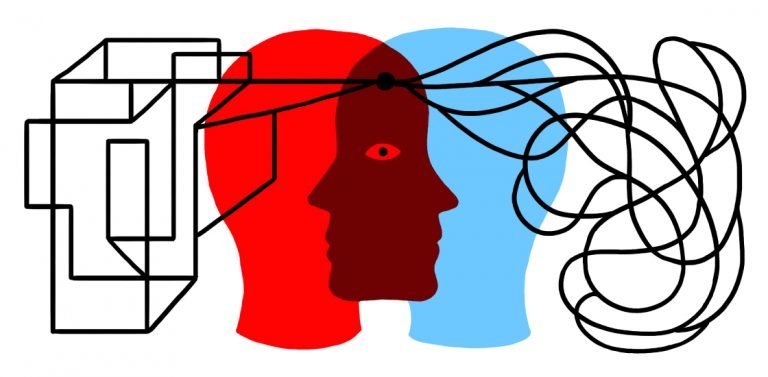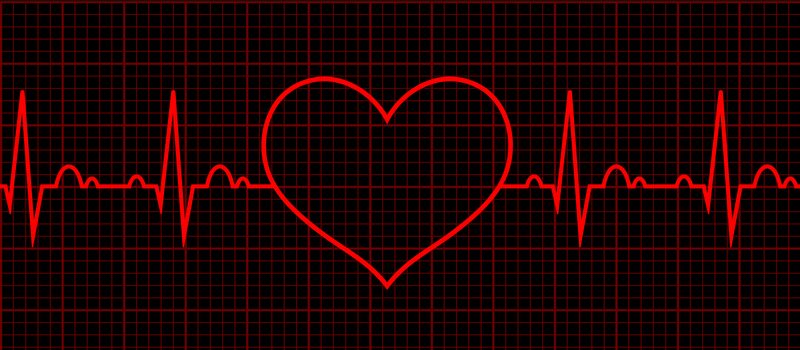understanding autism for parents
This comprehensive article aims to provide an in-depth understanding of autism, its causes, and the various treatment methods available. The article will be divided into the following sections, each exploring an aspect of the subject matter.

I. Introduction :
A. Definition of autism:
Autism, or Autism Spectrum Disorder (ASD), is a complex neurodevelopmental disorder characterized by challenges in social communication, restricted interests, and repetitive behaviors. Autism affects individuals differently, and its severity can range from mild to severe. The term “spectrum” is used to describe the wide range of symptoms, skills, and levels of impairment that people with ASD may experience.
B. Prevalence and demographics:
According to the Centers for Disease Control and Prevention (CDC), autism affects approximately 1 in 54 children in the United States. It is more common in males than in females, with a ratio of approximately 4:1. Autism affects individuals from all racial, ethnic, and socioeconomic backgrounds. The prevalence of autism has increased over the years, which may be attributed to better awareness, improved diagnostic criteria, and increased access to diagnostic services.
C. The history of autism research:
The term “autism” was first used by Swiss psychiatrist Eugen Bleuler in 1911 to describe a group of symptoms observed in patients with schizophrenia. However, it was not until the 1940s that American psychiatrist Leo Kanner and Austrian psychiatrist Hans Asperger independently conducted studies on children who exhibited the characteristics now associated with autism. Kanner focused on children with more severe symptoms, while Asperger studied those with milder characteristics, now referred to as Asperger syndrome. Since then, research in the field of autism has evolved significantly, leading to the current understanding of autism as a spectrum disorder.
D. The importance of awareness and early diagnosis:
Early diagnosis and intervention are crucial for individuals with autism, as they can significantly improve their long-term outcomes. Greater public awareness and understanding of autism can help identify the early signs of the disorder, facilitate access to appropriate support and services, and reduce the stigma associated with autism. In recent years, efforts have been made to promote autism awareness and acceptance through various initiatives, such as World Autism Awareness Day, which is observed annually on April 2nd.

II. Understanding Autism Spectrum Disorder (ASD)
A. The spectrum of autism:
Autism Spectrum Disorder (ASD) encompasses a wide range of symptoms, abilities, and levels of functioning. The severity of autism can vary greatly from one individual to another, and the specific combination of symptoms can also differ. This variation has led to the identification of three primary subtypes of autism:
Classic autism: Also known as “Kanner’s autism” or “autistic disorder,” classic autism typically involves significant impairments in social communication, restricted interests, and repetitive behaviors. Individuals with classic autism may also have intellectual disabilities, language delays, or other developmental challenges. They may require substantial support in daily living and may struggle with forming relationships or participating in social interactions.
Asperger syndrome: Asperger syndrome is a milder form of ASD, characterized by difficulties with social interactions and nonverbal communication, as well as restricted interests and repetitive behaviors. However, individuals with Asperger syndrome typically have average or above-average intelligence and do not exhibit significant language delays. They may have particular strengths in areas such as memorization, attention to detail, or problem-solving, but may struggle with understanding social cues, empathizing with others, or adapting to change.
Pervasive Developmental Disorder-Not Otherwise Specified (PDD-NOS): PDD-NOS is a diagnosis used for individuals who display some symptoms of autism but do not meet the full criteria for classic autism or Asperger syndrome. This category is often referred to as “atypical autism” and can include a wide range of symptoms and levels of functioning. Individuals with PDD-NOS may have milder or fewer social communication challenges, but still struggle with restricted interests or repetitive behaviors.
B. Common characteristics and behaviors:
While the specific combination of symptoms can vary, there are several core features that are often present in individuals with ASD:
Social communication challenges: Individuals with autism often have difficulties with verbal and nonverbal communication. They may struggle to initiate or maintain conversations, understand body language or facial expressions, and interpret social cues. They may also have trouble with perspective-taking, empathy, or understanding the emotions and intentions of others.
Repetitive behaviors: Repetitive behaviors, such as hand-flapping, rocking, or spinning, are common among individuals with autism. These behaviors can serve various functions, such as self-soothing, expressing excitement, or coping with sensory sensitivities. Individuals with autism may also have a strong preference for routines and may become distressed when routines are disrupted.
Sensory sensitivities: Many individuals with autism have heightened sensitivity to sensory stimuli, such as sounds, lights, textures, or tastes. They may experience sensory overload, which can lead to meltdowns or withdrawal from social situations. On the other hand, some individuals with autism may seek out specific sensory experiences or have a high tolerance for pain or discomfort.

III. Causes of Autism
A. Genetic factors:
Research suggests that genetics play a significant role in the development of autism. While the exact cause of autism is not yet fully understood, it is believed to be a result of a combination of genetic and environmental factors.
Heritability: Studies on twins have shown that autism has a strong genetic component, with heritability estimates ranging from 64% to 91%. This means that genetic factors contribute substantially to the likelihood of developing autism. However, the exact genetic mechanisms involved in autism are complex and not yet fully understood.
Specific genes and mutations: Scientists have identified numerous genes and genetic mutations associated with an increased risk of developing autism. Some of these genes are involved in brain development, synaptic function, and neural connectivity. Genetic mutations can occur spontaneously (de novo mutations) or be inherited from one or both parents. It is important to note that while certain genetic factors may increase the risk of autism, they do not guarantee that an individual will develop the disorder.
B. Environmental factors:
While genetics play a significant role in autism, environmental factors are also believed to contribute to the development of the disorder. These factors can interact with genetic predispositions to increase the likelihood of developing autism.
Prenatal exposures: Some studies have suggested that certain prenatal factors may increase the risk of autism. These factors include maternal infections during pregnancy, exposure to certain medications or toxins, and complications during birth. However, the relationship between these factors and autism is not yet fully understood, and more research is needed to determine their significance.
Postnatal influences: Environmental factors during early childhood may also contribute to the development of autism. For example, premature birth, low birth weight, and exposure to environmental toxins have been associated with an increased risk of autism. However, the exact mechanisms through which these factors influence autism risk are still being investigated.
C. Neurological differences:
Research has shown that individuals with autism have differences in brain structure, function, and connectivity compared to neurotypical individuals. These differences may be related to the development of autism and its associated symptoms.
Brain structure: Some studies have found that individuals with autism have differences in the size, shape, and connectivity of certain brain regions, such as the amygdala, hippocampus, and prefrontal cortex. These regions are involved in social processing, emotional regulation, and executive functioning.
Connectivity and neural networks: Research has also shown that individuals with autism may have altered patterns of neural connectivity, which can affect the way information is processed and transmitted within the brain. This may contribute to the social, communication, and behavioral challenges experienced by individuals with autism.
D. Debunking myths and misconceptions:
There are several misconceptions and myths surrounding the causes of autism that have been debunked by scientific research. It is important to be aware of these misconceptions to avoid spreading misinformation.
Vaccines: There is no scientific evidence to support the claim that vaccines cause autism. Numerous large-scale studies have shown that there is no link between vaccines and the development of autism. The myth that vaccines cause autism originated from a fraudulent study published in 1998, which has since been retracted and discredited.
Parenting styles: Autism is not caused by parenting styles, such as a lack of affection or discipline. This misconception was based on the now-discredited “refrigerator mother” theory, which suggested that cold, unresponsive parenting could lead to the development of autism. Current research demonstrates that autism is a neurodevelopmental disorder with genetic and environmental origins, and not a result of parenting styles or practices.

IV. Diagnosis and Assessment
A. Early warning signs and screening tools:
Early identification and diagnosis of autism are crucial, as they can lead to earlier intervention and better outcomes. There are several early warning signs and screening tools that can help identify children at risk for autism.
Early warning signs: Some early signs of autism may be observed in infants and toddlers, such as a lack of eye contact, limited social smiling, delayed or atypical language development, or repetitive behaviors. Other signs may include difficulties with joint attention, a lack of response to their name, or a preference for playing alone.
Screening tools: Various screening tools have been developed to help identify children at risk for autism. One widely used tool is the Modified Checklist for Autism in Toddlers (M-CHAT), which is designed for children between 16 and 30 months of age. This parent-report questionnaire assesses the child’s social, communication, and behavioral development and can help identify those who may need a more comprehensive evaluation.
B. Diagnostic criteria and assessment methods:
A formal diagnosis of autism is typically made by a team of professionals, such as psychologists, psychiatrists, speech-language therapists, and occupational therapists. They use a combination of diagnostic criteria and assessment methods to determine if a child meets the criteria for ASD.
Diagnostic criteria: The diagnostic criteria for ASD are outlined in the Diagnostic and Statistical Manual of Mental Disorders, Fifth Edition (DSM-5). According to the DSM-5, an individual must exhibit persistent deficits in social communication and interaction, as well as restricted, repetitive patterns of behavior, interests, or activities. The symptoms must be present in early childhood and cause significant impairment in daily functioning.
Assessment methods: A comprehensive assessment for autism typically involves a combination of methods, including behavioral observations, parent interviews, and standardized assessments. Professionals may use tools such as the Autism Diagnostic Observation Schedule (ADOS) or the Autism Diagnostic Interview-Revised (ADI-R) to gather information about the child’s social, communication, and behavioral development.
C. Differential diagnosis and comorbid conditions:
It is essential to consider other conditions that may have similar symptoms or co-occur with autism during the diagnostic process.
Differential diagnosis: Some conditions may present with symptoms similar to autism, such as language disorders, intellectual disabilities, or social communication disorder. It is essential to differentiate these conditions from autism to ensure appropriate intervention and support.
Comorbid conditions: Many individuals with autism may also have co-occurring conditions, such as attention deficit hyperactivity disorder (ADHD), anxiety, depression, or epilepsy. It is important to identify and address these conditions to provide comprehensive support and improve the individual’s overall quality of life.

V. Treatment and Intervention Approaches
There is no one-size-fits-all approach to treating autism, as the disorder affects each individual differently. Treatment plans should be tailored to the individual’s specific needs and may involve a combination of therapies and interventions. Some common treatment and intervention approaches include:
A. Applied Behavior Analysis (ABA):
ABA is a widely used evidence-based intervention for individuals with autism. It involves breaking down complex tasks into smaller, manageable steps and using positive reinforcement to promote skill acquisition and appropriate behaviors. ABA can be implemented in various settings, such as schools, homes, or specialized therapy centers, and can target a wide range of skills, including communication, socialization, and self-help skills.
B. Speech and language therapy:
Speech and language therapy can help individuals with autism improve their communication skills, both verbal and nonverbal. A speech-language therapist may work on developing the individual’s expressive and receptive language skills, as well as addressing issues related to speech production, articulation, and fluency. They may also help teach nonverbal communication strategies, such as using visual supports, gestures, or augmentative and alternative communication (AAC) devices.
C. Occupational therapy:
Occupational therapy can help individuals with autism develop the skills needed for daily living and independence. An occupational therapist may work on areas such as fine motor skills, self-care skills, sensory integration, and organization. They may also help the individual adapt to various environments and engage in meaningful activities.
D. Social skills training:
Social skills training can help individuals with autism improve their ability to interact with others and navigate social situations. This type of intervention may involve teaching specific social skills, such as making eye contact, taking turns, or initiating conversations. Social skills training can be conducted in various formats, including individual therapy, social skills groups, or peer-mediated interventions.
E. Pharmacological interventions:
While there is no medication that can cure autism, certain medications may help manage specific symptoms or co-occurring conditions. For example, medications may be prescribed to treat ADHD, anxiety, depression, or sleep disturbances in individuals with autism. It is essential to work closely with a healthcare professional to determine the appropriate medication and dosage for each individual.
F. Alternative and complementary therapies:
Some individuals with autism and their families may choose to explore alternative or complementary therapies, such as dietary interventions, sensory integration therapy, or music therapy. While some of these approaches may be helpful for specific individuals, it is essential to carefully evaluate the evidence supporting these interventions and consult with a healthcare professional before implementing them.
VI. Supporting Individuals with Autism and Their Families
A. Education and school-based support: Children with autism often require specialized support in educational settings to help them succeed academically and socially. Schools play a vital role in providing appropriate interventions, accommodations, and resources for students with autism.
A. Individualized Education Plan (IEP):
An IEP is a legally binding document that outlines the specific goals, services, and accommodations for a child with autism in an educational setting. The IEP is developed by a team, including the child’s parents, teachers, and other professionals, and is reviewed and updated annually.
B. Inclusion and specialized programs:
Schools may offer various options for students with autism, ranging from full inclusion in general education classrooms to specialized programs designed to address their unique needs. Decisions about the most appropriate educational setting for a child with autism should be made on an individual basis, considering factors such as the child’s strengths, challenges, and social-emotional well-being.
C. Classroom accommodations:
Teachers can implement a range of accommodations and strategies to support students with autism in the classroom, such as providing visual supports, using clear and concise instructions, offering structured routines, and promoting social interactions with peers.
B. Family support and resources: Families of individuals with autism play a crucial role in supporting their loved ones throughout their lives. It is essential to provide resources and support for these families to help them navigate the challenges and joys of raising a child with autism.
Parent education and training: Parent education and training programs can help families understand autism, learn effective strategies for managing challenging behaviors, and promote their child’s development. Programs may include workshops, support groups, or individualized consultations with professionals.
Respite care: Respite care offers temporary relief for families and caregivers of individuals with autism, allowing them to rest, recharge, and attend to personal needs. Respite care can be provided by professional caregivers or through informal arrangements with family members or friends.
Financial support and resources: Families of individuals with autism may face financial challenges related to the costs of treatments, therapies, and specialized educational services. Various resources are available to help offset these costs, such as government-funded programs, private insurance, and grants or scholarships from nonprofit organizations.
C. Advocacy and community support: Advocacy and community support are essential for raising awareness about autism, promoting acceptance and inclusion, and ensuring that individuals with autism and their families have access to the resources and services they need.
Awareness campaigns and events: Awareness campaigns and events, such as World Autism Awareness Day, aim to increase public understanding of autism and support the autism community. These initiatives can help reduce stigma, promote acceptance, and foster a more inclusive society.
Advocacy organizations: Numerous advocacy organizations, both national and international, work to advance the rights and interests of individuals with autism and their families. These organizations may offer resources, support services, and opportunities to connect with others in the autism community.
Community-based programs and activities: Inclusive community-based programs and activities can provide valuable opportunities for individuals with autism to socialize, develop new skills, and participate in meaningful experiences. Examples include inclusive sports teams, social clubs, and recreational programs designed to accommodate the unique needs of individuals with autism.


